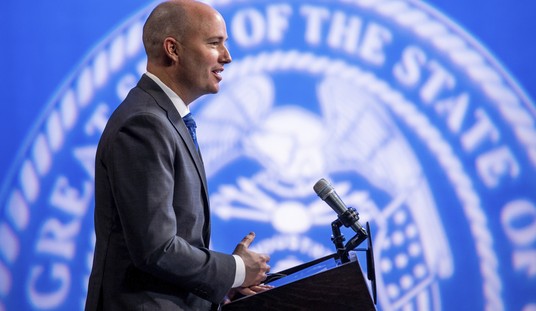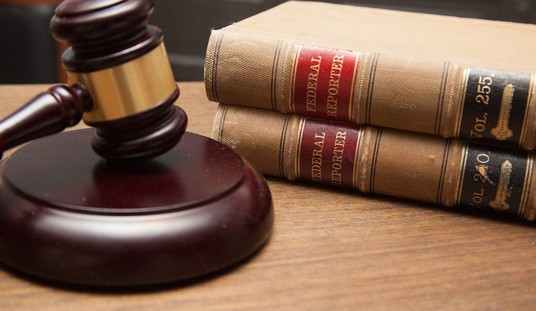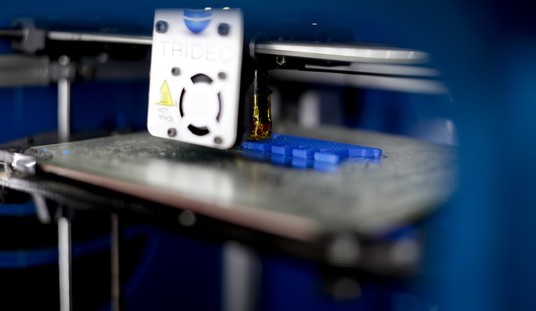Hey, Bob! Do you wanna go to one of the best-equipped firearms training facilities on the planet as the guest of the world’s oldest gun company, and get two solid days of training from some of the best firearms instructors in the world?
Well, duh.
I was very fortunate earlier this month to be one of the attendees to the first Beretta Tactical Summit, held at the elite Academi Training Center in Moyock, North Carolina.

Academi’s facility is the largest private training center in the United States, with all the cool toys and an incredible range of training capabilities.
The Beretta Defense Technologies group—made up of Beretta, Benelli, Sako, and Steiner—brought in a small group of shooting industry media to celebrate the 30th anniversary of the M9 pistol in the U.S. military, and to show use some of their other military and civilian tactical technology in both day and night shooting events.
Beretta spared no expense in bringing in some of the most respected firearms trainers in the world to run each 1/2 day training session, and you should really read their linked bios (below) if you aren’t familiar with their names.
John “Doc” Spears taught the precision rifle segment, Pat Rogers ran the carbine range, Ernest Langdon ran the pistol course, and last but not least, Steve Fisher ran the shotgun class. John “Chappy” Chapman ran the optics seminar and helped with the carbine course.
The writers were divided up into two groups.
To start the first day, my group went to one of the precision rifle ranges to shoot Sako rifles with Doc Spears. Rifles on the line included the Sako TRG 22, TRG 42, and the multi-caliber TRG M10. All rifles were chambered in .308 Winchester. There is some speculation that the TRG M10 would have won the SOCOM Precision Sniper Rifle (PSR) competition if it was a domestically-manufactured gun.

The Sako TRG M10 I found myself with is very configurable, and so I was easily able to adjust the length of pull and comb so that it fit me like a glove. My rifle sported a crystal-clear Steiner 5-25×56 scope with the Horus H59 “Christmas tree” reticle, which I’d used once before. We started out at 100 yards to get used to the rifle and make adjustments to the stock and the glass, but quickly moved back to 400 and then 800 yards, with Doc Spears making our wind calls for us.
I fancy myself as a rifle guy, and so I was absolutely eating up the instruction from Doc Spears on long-range shooting. Unfortunately, there wasn’t a whiteboard for Doc to show us ballistic formulas, so he made do, writing on the side of a van that was transporting the rifles and ammunition. Here’s what that van looked like later than afternoon.

As the morning session at 800 yards was winding down, Doc had us engage in a little shooting competition. We got each got a shot at 800 yards, and if we missed, we were out. We’d then start the next round with the remaining shooters, with each shooter getting one attempt at 800 yards.

After the first few rounds it quickly whittled down to just two of us, as I went shot-for-shot against another editor. I honestly don’t know who it was, as I was in my “rifleman’s bubble” and never came off the gun, focusing on my shot, waiting for my turn.
We were very evenly matched.
Doc got tired of us matching shot-for-shot, so he started having us make our own wind calls to introduce more difficulty. My elevation was dialed in, and the winds were gusty at times, but light. I held .4 mils into the wind, aimed at the upper left shoulder of the target, and simply followed the foundational techniques we teach at Appleseed events.
I didn’t miss, and he got unlucky with a wind call, so I won the morning group. We got to shoot it again with NVGs at the same distance at night, and it was an incredible experience.
* * *
After lunch our group moved to the ARX100 carbine. The ARX100 is the semi-auto version of the ARX160, which was a finalist in a competition to replace the current-issue M4 carbine which was cancelled. The controls on the ARX100 were a little difficult to get used to since I’m so used to running an AR-15, and I never did quite get the hang of running the controls without conscious effort. That said, we only got a half day on the carbine. The 16″ barrel was great for velocity, but I felt that the SBR version was balanced almost perfectly.
David Crane at Defense Review captured video of Chappy showing us the carbine’s modularity (and did a nice write up) on this very interesting carbine.
While shooting the ARX100 during the day was awesome, shooting it at night was simply surreal. Here’s what it looked like shooting the ARX100 with visible green lasers and tactical lights on steel.
Below is what it looked like when we were shooting with helmet-mounted PVS-14s and infrared lasers. The glow sticks that seemed to be hovering in the air were attached to the shooters on the line. Other than the glow sticks, all you could see were muzzle flashes, though you could certainly here shot after shot ringing steel.
After this, I’d love to do a dedicated low-light class with night vision equipment. It’s a whole other world.
But that was just the end of the first day of shooting. There was lots more to come.
[article continues on next page]
Wednesday morning was bitter. The wind was blowing hard, and the temperatures were in the high 40s/low 50s as IDPA/USPSA champion shooter and M9 guru Ernest Langdon put us on the line with the handgun that has been the staple of the U.S Army for the past 30 years. There were various iterations of the M9 on the line (including the M9, 92FS, 92G, possibly a Vertex, and the new M9A3), but I ran a stock M9… and shot it as poorly as I’ve fired a handgun in my life.
I hasten to add that this was not a problem with the M9, but simply a matter of me not really being much of a pistol shooter, and the fact that I was completely new to DA/SA guns. I’ve owned and shot pistols since I was 21, but they were invariably single-action 1911s, striker-fired polymer guns, or DAO pistols and revolvers. Manipulation of the slide-mounted safety/decocker was giving me fits for some reason, and I was thinking t0o much, fighting the long trigger pull each and every time, trying to force the shot instead of letting it happen.
It was a horribly frustrating morning, but perhaps one of the most important mornings of my life in terms of what was said, and not in terms of how I shot.
Like all of the instructors at the Beretta Tactical Summit, Earnest Langdon is a world-class shooter and instructor who works with military and law enforcement units, and also consults with the major manufacturers (including Beretta, Crimson Trace, Sig Sauer, and Surefire) as a systems expert. He gave a brief talk about the merits of the DA/SA system during the class that led to an hour-long phone conversation with him after the NRA Annual Meeting, which has led to a foundational shift in how I think about defensive handguns.
I’ll still lust after the artistry of high end 1911s, and I’ll probably keep some of my striker-fired handguns for range use, but I’ll be switching to DA/SA guns for self-defense. You can read about why that is in an op-ed for a major newspaper that will be published very soon…
* * *
After lunch, the weather finally warmed up to a tolerable degree as Steve “Yeti” Fisher taught us how to fire and feed the Beretta 1301 Tactical shotgun.
Most of my experience with shotguns has been with pumps from Savage, Remington, and Mossberg, with only limited shooting older, much heavy semi-auto designs.
The first thing I noticed about the 1301 Tactical was just how light it was, weighing in at just 6.4 pounds empty. The 1301 is designed for law enforcement and home defense, with a short stock (adjustable via spacers), a 18.5″ cylinder-bore barrel, and a large charging handle and bolt release to get the gun back up and firing as fast as possible.
After a brief intro to the shotgun, Fisher started putting us to work, working us through loading and firing drills. Cycling at a claimed 36% faster than other semi-auto shotguns, it was easy to quickly run the 5+1 shotgun dry, and so we were constantly working to refine our loading techniques.
One of our drills involved each shooter loading one round directly into the chamber, dropping the bolt release, and firing just as soon as the shooter ahead of him/her was done to start. It sounds simple enough, right?
The shooter would then load a cartridge into the magazine tube, have another round in hand to drop in when the line got back to them and it was their turn to shoot two rounds.
And we kept going.
As the drill continued, the shooters were forced to add an additional cartridge in the magazine each time, so that by the final round, we each had to load five rounds in the magazine tube, drop one in the chamber when it was our turn, and then fire off six accurate rounds on steel.
It was, too put it mildly, intense.
But the fun was only just beginning.

We’d been shooting birdshot field loads up until this point, and it was time to get an understanding of how the 1301 Tactical ran with 00 Buckshot, the preferred duty round for 12-gauge shotguns. Our ammunition for the day was Federal’s 00 Buck offering with their FliteControl wad. Most shotgun shells have their shot column in a a wadding that is designed to open up and peel away in flight. It’s a time-tested model, but leaves plenty of room for improvement as the wad peeling away can cause pellets to string out. The FliteControl wadding is designed to slow down and simply back away as the column of shot continues down range, and thus holds a tighter pattern, longer.
How long and how tight? It was time to see.
Using paper silhouette targets , we started at 5 yards and started working out way back to see how our shotguns would pattern. I’ll be during a separate article about that, but let me simply start that those of you who were told that you only need to point a shotgun, and not aim it, were lied to.
Fisher then showed us just how much precision word you could do with a 1301 Tactical loaded with buckshot using a pair of steel popper targets a foot apart. The popper to our left was the bad guy. The popper to our right was the no-shoot.
How far out could we take the Beretta 1301 Tactical shotgun and FliteControl 00 Buckshot and still make hits on the bad guy target, without putting pellets in the no-shoot right beside it?
15 yards…
25 yards…
40 yards…
50 yards…
Finally, at 75 yards, the pattern opened up enough that out bad guy only took three pellets—each the size of a pistol bullet—and the no-shoot caught a single pellet in the hand.
To prove it simply wasn’t showboating on Fisher’s part, we all loaded our 1301s to capacity and unloaded on 1’x1′ plates at 50 yards. All you heard was the roar of guns and the clanging of steel.
Modern buckshot in a good shotgun is a legitimate 50 yard defensive tool.
After the distance demonstration, we had a shoot-off to round out the day, seeing how fast we could fire all 6 rounds from the 1301 Tactical at 6 targets on a standard pistol plate rack from a distance of 10 yards.
I was the last shooter in the final group, and as I saw the time to clear the rack drop from 5.3 seconds, to 4.6, to 4.3, I simply wrote off my chances of winning the shoot-off. I simply focused on making sure that I was smooth and hit my targets.

Well, you know the old saying repeated by firearms instructors again and again, “slow is smooth, smooth is fast?”
It turns out I was pretty smooth.
3.49 seconds smooth.
Needless to say, I really want a 1301 Tactical shotgun now to replace my pump guns.
That night we all met and feasted and talked about the event. I think we were unanimous in proclaiming the first Beretta Tactical Summit a success, and the only complaint I recall was that it wasn’t longer, with more time to spend in each discipline.
It wasn’t until after dinner that I heard there were going to be awards given for the best shooters in each of the four disciplines. I thought I had my best chance at the long-range award since I won my group, but I was pleasantly surprised to find out that I was “smooth enough” with the 1301 tactical to win the shotgun event (I was later told that I came in second in the precision rifle).
The rewards for the top four shooters quite generous were quite generous, with Beretta awarding each us an M9 pistol of our very own.

Beretta throws one heck of an impressive event, and I sincerely hope that the Beretta Tactical Summit becomes an annual event.








Join the conversation as a VIP Member